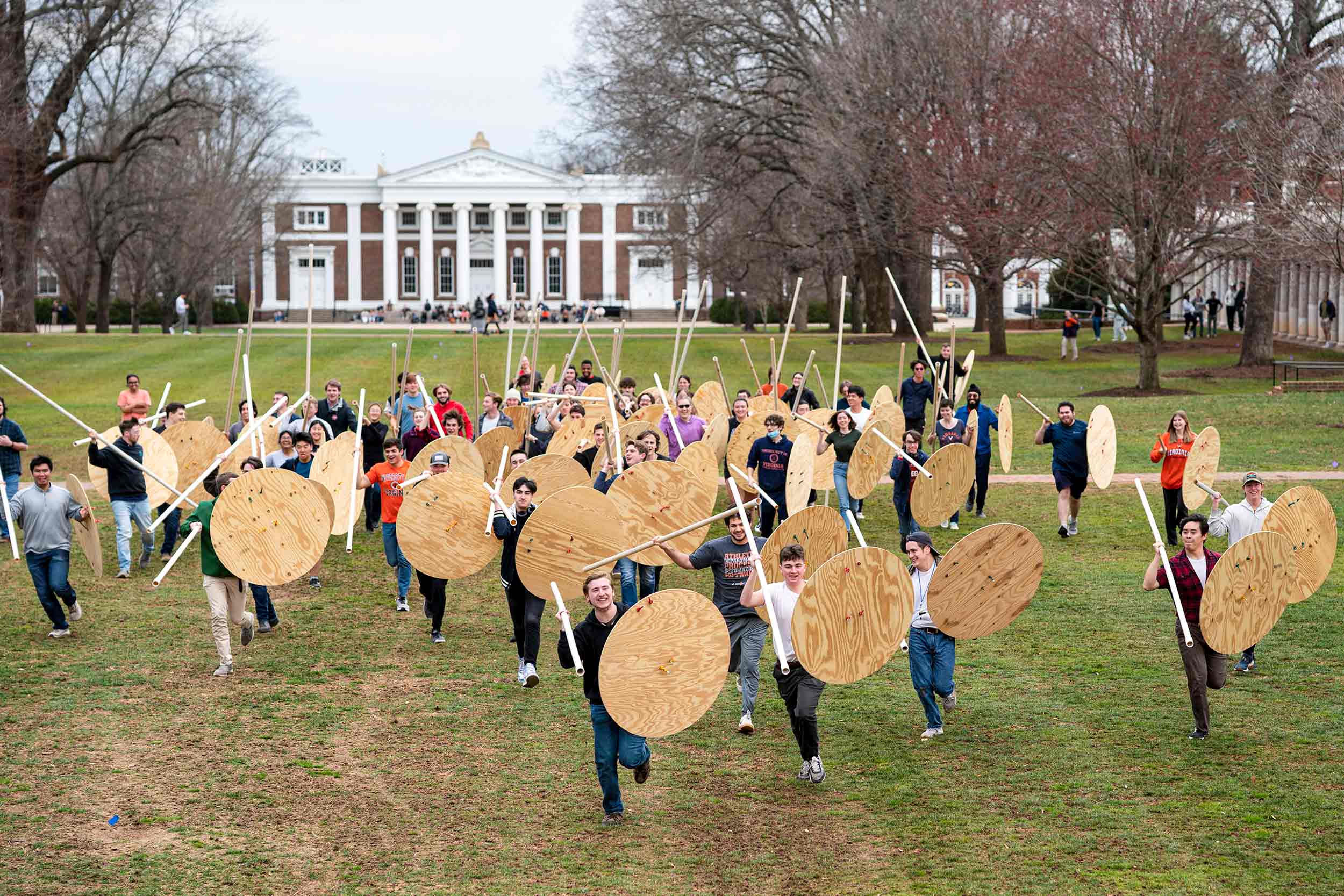Above, students in history professor J.E. Lendon’s Greek and Roman Warfare class advance on the Lawn at the University of Virginia in the form of a Greek phalanx.
“The purpose is to give students experience with the Greek (c. 725-338 BC) and Macedonian (338-31 BC) phalanx, the close-set infantry formations in which those ancient peoples fought,” Lendon, who has been doing this with students for about 20 years, wrote in an email. “First we do the Greek phalanx with the large wooden shields and short spears made from PVC pipes, and then we connect two PVC pipes together with a coupling and do the Macedonian phalanx with its 20-foot spears.”
Lendon said he was demonstrating to the students that it is relatively easy for untrained groups, such as the Greek warriors, to hold their formation in the short-speared Greek phalanx, unless they begin to run. The Macedonian phalanx, with its longer, heavier and more awkward spears, is better handled by trained infantry, Lendon said.



